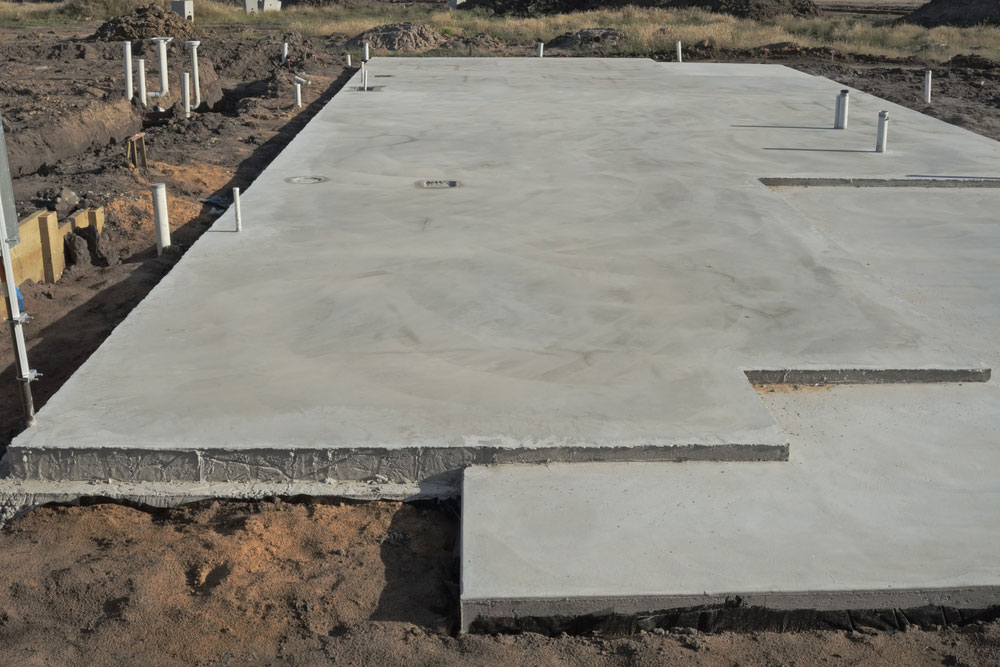Because of its role as a structural base, the foundation is an important part of your home. It has to bear the weight of the entire structure and everything inside it. The time it has before it becomes unstable will depend on the type of soil on which it was built. If the surrounding soil is stable, your foundation will hold together for many years. But if the soil is weak, it’s going to sink after just a few years. This downward movement is referred to as “foundation settlement,” and it usually happens when the surrounding soil is shifty or expansive. In either situation, the soil isn’t able to carry the weight of your home and everything in it.

Causes of Foundation Settlement
Some homes aren’t built on stable soil. When its contents shrink or expand, they leave voids under the structure. There are several things that can cause these changes, which can include the following:
- Drying and Shrinking — Soil dries out during long droughts. When the particles are left without moisture inside them, they shrink. This will leave gaps in the soil, which can occur under homes that were built on unstable soil.
- Wetting and Softening — While droughts can cause the soil to become too dry, heavy rainfall can cause it to become too saturated. When this happens, the soil particles will soften, which will make it unable to support the foundation.
- Poor Soil Compaction — Some soil types have poor compaction, which causes them to compress under the weight of the structure. Before they construct a new building, builders need to excavate, fill, and level the soil within the construction site. If they compact the soil well enough, the foundation is less likely to settle.
Be sure to speak to a professional for more information about the causes of foundation settlement.
Signs of Foundation Settlement
Whenever a foundation settles or sinks, you’ll be able to notice certain signs. Some of them include the following:
- Foundation Cracks — If you see cracks in your foundation, it’s a strong indication that settlement has occurred. Over time, these cracks can become longer and wider (which is a sign that the foundation is shifting even further). If the cracks are wider at the top, it’s a clear sign of uneven foundation settlement.
- Sticking Doors and Windows — This is a common problem in older homes. It can sometimes be caused by a moisture issue or a problem with the internal parts, but it can also be the result of foundation settlement.
- Cracks in the Drywall — This can be caused by a bad tape job or excess moisture, but it can also be sign that you have a foundation problem. If it is caused by foundation settlement, the cracks will reappear after you patch them. Look out for nail pops, which can happen when the drywall shifts.
- Uneven Floors — If your floors are uneven or out of level, it’s a clear sign of foundation settlement. Look for any signs of leaning or tilting in your chimney. You also want to watch for stair-step cracks in a concrete block or in brick foundation walls.
Be sure to speak to an expert for more information about the signs of foundation settlement.
Types of Foundation Settlement
Here are the three main types of foundation settlement:
- Uniform Settlement — This type of settlement occurs when the structure is built on the same lay of soil up to the foundation depth, which doesn’t have a major impact on the structure.
- Tipping Settlement — This happens when one part of the structure has settled to a certain depth. This can cause the entire structure to collapse.
- Differential Settlement — This usually happens when the soil has different layers. Certain parts of the structure can settle differently, which can cause cracks to form in different areas.
Be sure to speak to a professional for more information.
How to Fix Foundation Settlement
Here are some of the ways that foundation settlement can be resolved:
- Foundation Push Piers — This is a great method for heavier structures and will prevent cracks from spreading. In some situations, these piers can lift a sunken foundation and permanently close any gaps.
- Helical Piers — Also referred to as “screw piles,” this method can be helpful in stabilizing your foundation. They can be installed down into stable soil, which will permanently stabilize your foundation. Helical piers are perfect for lighter structures and are often used by contractors to lift foundations.
- Slab Piers — This is a hassle-free system that’s great for homes with concrete slab foundations. They’re installed deep into the soil so it can become more stable, which can be helpful in stabilizing a foundation.
If you’re looking for one of the best places for foundation repair in Corpus Christi, be sure to get in touch with Streem Foundation Repair.
